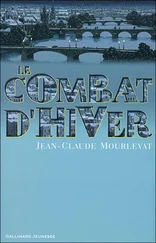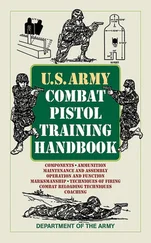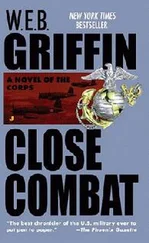Once the disk-repair routine was running, Angelo had little to do but sit back and watch. The images that flashed across his screen were, to Angelo, a bit silly. It showed a little figure, dressed in white with a red cross on his chest, turning a disk. Every now and then, the figure would stop, bend over, and give the appearance of examining a spot on the disk. After a second, the figure would straighten up and continue his search for another “injured” disk sector. Angelo no more enjoyed watching this mundane sequence than he did sitting before a television screen displaying a test pattern. Yet like the late-night viewer too tired to sleep, the Chilean continued to stare at his screen. Even the fact that the little stick figure before his eyes was going about its mindless chores slowly and with jerky motions couldn’t shake Angelo from his inattention.
In was in this semiconscious, almost hypnotic state that something utterly unexpected happened. The entire screen before him simply went blank. There was no flickering or shrinking of the image that is characteristic of a loss of power. Angelo did not hear the snapping that usually accompanies the tripping of the monitor’s on-off switch. Nor was there a change in the steady hum of the computer itself that would have occurred if hit by a surge. One second the screen had been up and active. Then the next, it was pitch-black.
After blinking in an effort to clear the glaze from his eyes, Angelo stared dumbstruck at the unnatural blackness before him. Already troubled by the previous problem he had been attempting to resolve, this new development further confused the Chilean hacker. He was just beginning to wonder if the diagnostic tools that he had turned to were the cause of this calamity when, on the left-hand side of his screen, he saw a figure appear. The peculiar figure, attired from head to toe in green medieval armor and mounted on a barded horse, sported a long lance and carried a shield. Mesmerized, Angelo watched as the knight, measuring about two and a half centimeters, rode out into the center of his screen. Once there, the horse turned until the small green knight, lance still held at a forty-five-degree angle, was facing Angelo head-on. The figure paused only long enough to lower his lance and tuck his shield up closer to his body. Then, with a quick swing of his feet, the green knight spurred his mount and charged forward.
Fascinated, Angelo watched. While one part of his mind wondered where this image was coming from, another part of the young man’s brain found itself captivated by the details of the computer-generated knight and its lifelike motions. As the virtual knight loomed closer and grew larger, more and more details were revealed. Quickly Angelo came to realize that the knight was not all green. Instead, the armor of the growing image before him began to blossom into a motley pattern of light greens, dark greens, browns, tans, and splotches of black, not at all unlike the camouflage pattern worn by modern combat soldiers. Even the bard protecting the knight’s steed was adorned with the same pattern. Only the shield clinched by the charging knight failed to conform to this scheme. Rather, the shield’s background was as black as the rest of the screen. Upon that field, at a diagonal, was the symbol of a silver lightning bolt, coursing its way from the upper right-hand corner almost down to the lower left. On one side of the bolt there was a yellow zero, on the other a one, numbers that represented the basic building blocks of all computer languages.
Completely engrossed by the video presentation, it took Angelo’s mind far too long to realize that the advancing knight, filling more and more of the screen before him as it charged home, was not meant to be entertaining. Rather the symbol of military virtue, power, and untiring quests was the harbinger of disaster. When this horrible fact finally managed to seep its way into his conscious mind, the young Chilean all but leaped out of his chair, as if struck by a lighting bolt not at all unlike the one adorning the knight’s grim, black shield. With a jerk he reached for the master power switch in a determined effort to crash his own system before the unheralded knight struck home and did whatever mischief its creator intended.
Had he been thinking straight, Angelo would have saved himself the trouble, accepted his fate calmly, and enjoyed the show. For the knight he saw was not the initiator of electronic doom, but rather a messenger sent forth from an implanted program within Angelo’s machine to announce that a sequence of destruction designed to destroy the Chilean’s toy had run its course. The South American hacker had been blindsided by an assault launched across the World Wide Web by another cyber combatant, a young boy not at all unlike himself. Like so many other intruders before, Angelo Castalano had been struck down by America’s new front-line guardians, the Cyberknights of West Fort Hood.
The tunnels and chambers that honeycomb the hills of West Fort Hood had been built in another era. They had been part of a national effort to fight a foe that no longer existed, using weapons designed to be delivered by aircraft and missiles that had been relegated to museums. In underground chambers encased by reinforced concrete, nuclear weapons had been stored and assembled before being wheeled out onto the tarmac of the adjoining airfield, where the city-killing devices were hosted in the waiting bomb bays of B-47s. For many years the people of the United States had depended on those bombers to stand guard and protect them from foreign intruders. In time new weapons, weapons that were more precise, more advanced, replaced the free-fall bombs that had once been hidden away under the scrub-covered hills of West Fort Hood.
Strangely, the usefulness of the facilities that had been little more than storerooms during the Cold War long outlasted the weapons system they had been created to house. When the bombers had flown off for the last time, and the bombs themselves moved to other underground bunkers, new occupants moved into the spaces left behind.
This subterranean world had much going for it. For one thing, the earth and rock that concealed the underground work spaces created a constant environment and temperature. Other than providing a steady flow of fresh air, little needed to be invested in the heating or cooling of the facility to a round-the-clock temperature of just under seventy degrees. For those who have not had the opportunity to enjoy the month of August in Texas, this was a very big plus. Nor did people need to concern themselves a great deal with physical upkeep. There were, after all, no lawns, walkways, windows, or exterior walls that needed to be tended to. Even the interior was rather robust and carefree. The babyshit green glazed tiles that covered the walls, while monotonous and difficult to work with, made painting all but unnecessary. There were, of course, issues and difficulties that were well-nigh impossible to overcome. For one thing, the all-male draftee Air Force of the early 1950s had far different ideas about the minimum requirements when it came to the latrines than did the mixed workforce that followed them in later decades. And when it came to updating the electrical web that supplied power to everything from the overhead lights to high-speed computers, architects and engineers first found themselves having to redefine the meaning of creativity.
The attraction of the underground complex, however, went beyond these concerns over simple creature comfort. The very nature of the facility made access difficult. Since there were so few outlets, movement into and out of the underground complex could be readily controlled. The access tunnels which did connect the outside world to the work spaces within were long, straight, unobstructed, and narrow. This permitted security personnel manning the checkpoints at both ends of these tunnels clean fields of fire. The posts themselves, holdovers from the days when top-secret weapons had been stored there, were in fact bunkers. From behind bulletproof glass and using gun ports designed to sweep the entire length of the tunnel as well as the area immediately outside, the military police on duty could employ their automatic weapons to deny entrance into the complex completely.
Читать дальше












